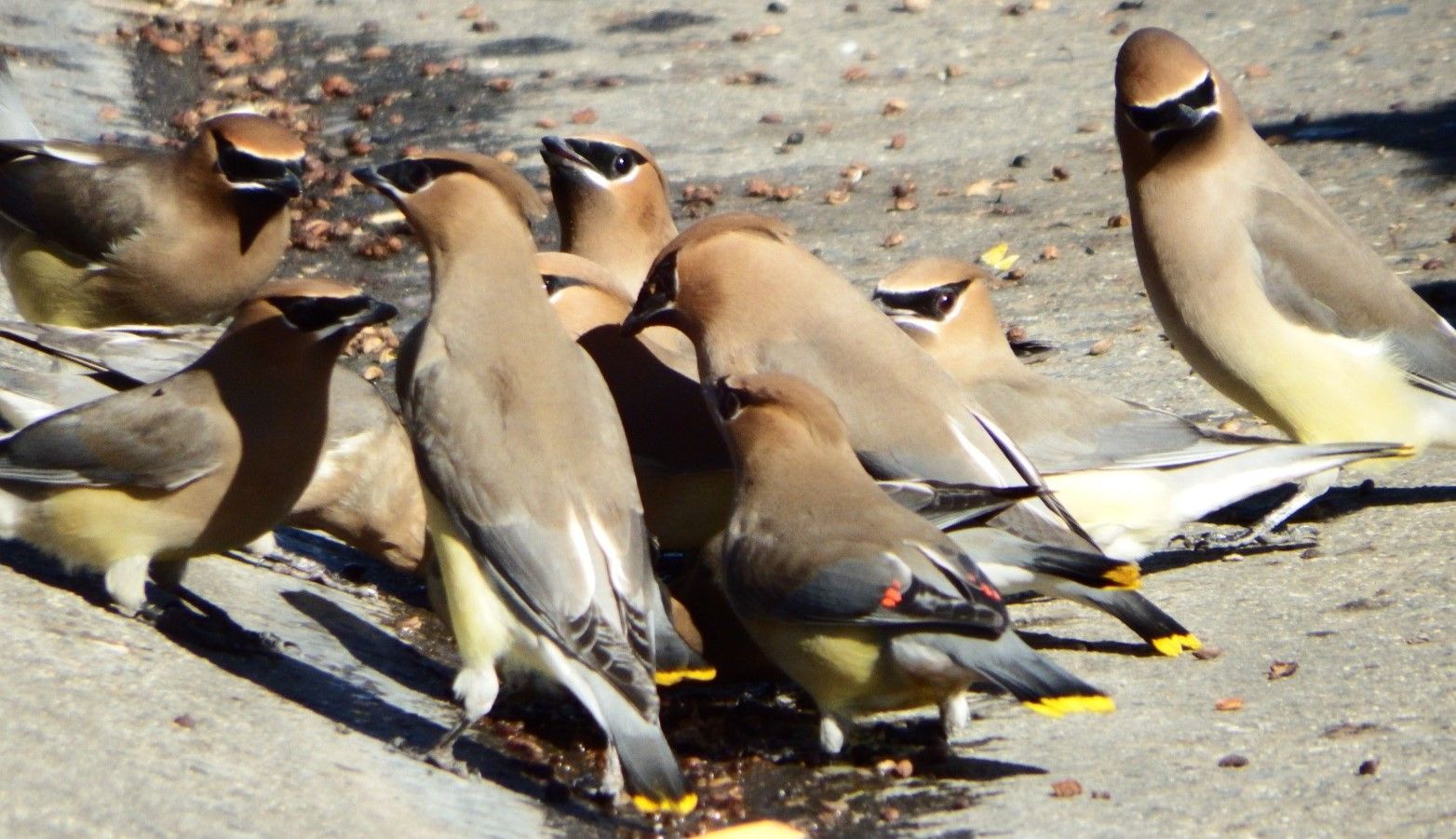Science Corner - Cedar Waxwings, a Sociable and Stylish Wintertime Visitor

Years ago I was sitting in my Volkswagen Jetta (rest in peace, fun little car) in a grocery store parking lot in Sacramento. I was parked under a hackberry tree that was brimming with oodles of petite, buffy-yellow birds with pointy little crowns. The birds were gorging themselves on the berries from the tree and depositing digested bits all over my car but I didn’t care, I was enthralled by these new little friends.
This was my first encounter with Cedar Waxwings (Bombycilla cedrorum). I don’t know why, or how, I hadn’t noticed them before with their stunning black face mask, satiny buffy-yellow body feathers, sunny lemon-tipped tail and bright red waxy droplets on their wings - which is where their common name comes from.
Their Latin name, Bombycilla cedrorum literally translates to “silk of the cedars” referring to their silky, chiffon-looking plumage. They are native to North and Central America and breed in the woodlands of southern Canada. And migrate to winter in the southern United States, Central America and sometimes as far as northwest South America. Although they specialize in eating fruit, they also consume insects and flowers for a short time during nesting season. Cedar Waxwings are a medium size bird with a wing span of about six and a half inches and they weigh around an ounce - about the weight of a pencil. What appears to be wax droplets at the end of their secondary feathers are actually an accumulation of astaxanthin, a carotenoid that gives some fruit its red color. The red pigment is surrounded by a transparent cuticle which allows the color to show though. The size and number of these “droplets” are directly correlated with the age of the bird and it is believed that they convey social status among the flock. Cedar Waxwings are congenial and large groups of them are found among the edges of forests and woodlands but are also common in urban areas with easy access to fruiting shrubs and trees within their range. They are attracted to the sound of running water such as creeks, fountains and birdbaths. They are nomadic and will move in huge groups to find new berry supplies.
Breeding season occurs while the birds are in Canada and begins in late spring and lasts through the end of summer. The male will hop in front of a female and if she is interested, she returns the gesture. A mated pair will sit together and pass an object such as a flower petal or an insect back and forth. Both Cedar Waxwing males and females have the same plumage (monomorphism) which is true with about half of all bird species, unlike waterfowl where males and females look different from each other. Both the male and female work on nest construction and will sometimes steal material from other species’ nests.
The current population is estimated to be about 57 million birds. They begin to show up in the Sacramento area in September and stick around until about May depending on food availability. To invite these cordial little birds to your yard for their winter vacation, plant fruiting trees and shrubs that produce berries and provide a clean water source. Enjoy watching them!
Fun facts about Cedar Waxwings:
- Cedar Waxwings have specialized digestion and can survive almost solely on fruit while other species cannot. The parasitic Brown-headed Cowbird lays eggs in the nests of other bird species for the parents to raise. The eggs that are laid in Cedar Waxwing nests often do not survive due to the high percentage of fruit.
- If Cedar Waxwings eat over-ripe fruit that has begun to ferment, they can become intoxicated.
- Some Cedar Waxwings in the northeastern states have an orange tipped tail due to the red pigments in a certain berry. If the bird eats a bunch of these berries while the feather is growing, the tip will be orange rather than yellow.
- Sometimes, if berries are difficult to reach, Cedar Waxwings will line up and pass berries beak to beak down the line until one of them swallows it.
-Kristie Ehrhardt (kehrhardt@tuleyome.org)
Tuleyome Land Conservation Program Manager
RECENT ARTICLES






